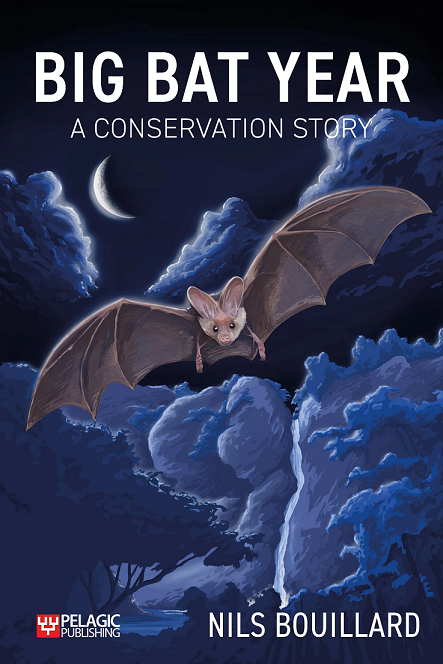
Stories of ‘Big Years’ where the storyteller tries to see as many [some aspect of wildlife] as possible in [a defined area] in a year, usually a calendar year, are great fun. You do have to question the carbon emissions but if you can put them to the back of your mind then accounts of racing around the world finding wildlife can be quite gripping – provided that the tale is well told. This tale is well told and I enjoyed it.
The author recognises that compared with birds and other mammals, bats do have some disadvantages for such an enterprise. They are mostly nocturnal, mostly not well known and mostly they look the same (brown and flitty – I speak as one with a PhD in bat ecology). And so the book needs to be carried along with good tales of triumph and disaster, of the food, places and people met along the way, and this book carries that off well. You can’t really get past the fact that most of us don’t know our Stoliczka’s Trident Bats (Thailand) from our Egyptian Slit-faced Bat (Kenya) and so there are lots of bat names (he saw/recorded 400 species) which mean very little to this reader. But there are vampires here, and Mayan temples, and a lot of good birds, and a new bat for science, and Rough-scaled Death Adders.
Also, the chapters on different countries are broken up with short essays on topics such as non-native species, wind turbines, evolution, migration, disease and reproduction. These were really interesting, as bats are interesting and there was much to learn here.
All Big Years have to set some rules about what does and doesn’t ‘count’. The author plumped for only counting ‘heard’ bats but as many bats operate in the ultrasonic areas this meant that he was very dependent on his kit for recording bat calls. that presented alarms and challenges on his journey through sodden rainforests. One of the most interesting snippets in the book was that there are now no (or perhaps one) non-native introduced bat populations anywhere on Earth. That’s worth pondering and running through how untrue it is of other taxonomic groups.
The author recorded about a third of the world’s bat species in his Big Year – so there is plenty of headroom for future attempts to break the record. Will anyone have a go? Maybe, but let us return to all that carbon expended, and the author discusses it briefly near the book’s end. Will such travels be regarded as acceptable for much longer? Will reading about them appeal to any but a small group of people? We’ll see, but travelogues have always been popular with readers. I enjoyed this volume.
The cover? Good, and it has grown on me over time, so I’ll give it a rare 9/10.
Big Bat Year: a conservation story by Nils Bouillard is published by Pelagic Publishing.

My forthcoming book, Reflections, will be published on 4 July.
Details – click here and read what others think about it.
[registration_form]